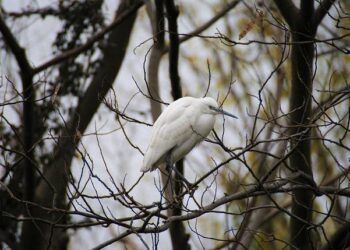Travel
Jade-filled tombs. Ages-old ball courts. Bloodletting rituals. Visit Chiapas to experience the ruins and secrets of the ancients.
ByErick Pinedo
Published November 22, 2023
• 8 min read
“Lost Cities Revealed with Albert Lin” premieres on National Geographic Channel and Disney+ November 23.
The ancient Maya thrived for some 3,000 years and created a monumental legacy that still inspires pop culture, from animated series to video games. Their stepped stone pyramids and glyph carved temple walls can be found in Guatemala, Belize, and Mexico, home to the well known sites of Tulum, Chichén Itzá, and the Uxmal pyramids.
But the lesser known, lesser trafficked Maya settlements and worship sites of Chiapas—Mexico’s southernmost state—are also worth discovering for their combination of archaeology and nature.
The most famous and largest of them, Palenque, is the focus of the first episode of Season 2 of “Lost Cities Revealed with Albert Lin,” which premieres on the National Geographic Channel and Disney+ November 23. In it, the scientist and National Geographic Explorer Albert Lin uses high tech methods to delve into the storied site.
“Palenque is where Maya archaeology began, from that first glimpse of glyphs and pyramids in the jungle,” says Lin, referring to the site’s rediscovery by 18th-century Spanish explorers.
Here’s how to dive into this influential history amid the mountains and jungles of Chiapas.
An ancient temple and trade route
Maya society thrived at Palenque between the 5th and 9th centuries A.D., powered by the site’s location on a commercial route between central Mexico and the Yucatán Peninsula. Traders ferried in flint and obsidian from Guatemala and “artisans were able to model stucco in a very advanced stylistic manner,” says archaeologist Carlos Miguel Varela Sherrer, field chief of the site.
Today, most visitors reach the modern city of Palenque by air from Mexico City (1 hour 40 minutes) or Cancún before taking a 15-minute drive through ceiba tree-shaded foothills to the UNESCO World Heritage-recognized site. Hundreds of Maya buildings—many yet to be excavated—sprawl over 3,700 acres of tropical jungle.
The site’s central area, which functioned as a residential, governmental, and religious center, is dominated by the impressive Temple of the Inscriptions, a 75-foot-tall, stepped limestone pyramid. This stone tribute to the region’s most famous ancient ruler, Pakal the Great (615-683 A.D.), was excavated between 1949 and 1954. His jade death mask is now displayed at Mexico City’s National Museum of Anthropology, but the Palenque Site Museum holds a replica of it and the burial chamber.
The tomb beneath the pyramid, closed to the public to prevent damage, has stone walls carved with stylized reliefs of Pakal, his family, and the underworld, as well as an enormous sarcophagus made from a single piece of stone.
“The inside looks like a crystal cave because the limestone has leaked calcite into little stalactites,” says Lin, who entered the tomb and used lidar (light detection and ranging) to explore it on the show. “All along the walls you see inscriptions, the origin story of Palenque.”
(See the Maya underworld in Belize—if you dare.)
Palenque also holds more than 1,500 other Maya structures, including the Cross Group, a trio of temples built at different elevations, most likely meant to represent the sky, the Earth, and the underworld. Its “El Templo de la Calavera” (The Temple of the Skull) has a relief of a human skull carved at its base. The ruins of a central palace, thought to be Pakal’s, have a four-story stone tower as well as indoor plumbing and a steam bath.
“The region has a lot of stone, which allowed for unique architectural work,” says Varela.
A Maya trail through Chiapas
Beyond Palenque, you can follow the Maya trade route through Chiapas. Eighty miles south, the city-state of Toniná was inhabited from the first to 16th centuries A.D. by Palenque’s ancestral enemies. They erected the tallest extant pyramid in the Americas in the 14th century A.D., the 1,049-foot-high “Acropolis.”
It’s the anchor of a site where temple-pyramids are arranged on earthen terraces high above a central plaza where Mayas played pelota, a kind of handball. Recent archaeological studies posit that the people of Toniná combined the ashes of their deceased rulers with rubber to make pelota balls.
(Discover Maya history on Mexico’s first long-distance trail.)
A three-hour drive west, the ruins of Yaxchilán skirt the banks of the Usumacinta River (the natural border between Mexico and Guatemala). You’ll probably encounter more howler monkeys than tourists amid the intricately carved stelae and temples where the “Jaguar” clan thrived from 500 to 700 A.D.
A five-hour drive east from Yaxchilán, Bonampak holds crumbling structures such as the Temple of the Murals, where colorful frescoes of Maya court life adorn the walls. Scenes depicting ritual bloodletting as well as parades of musicians hint at a complex culture that fascinates us to this day.
what to know
Seeing the sites: Though you can explore on your own, it may be easiest to navigate via guided tours by companies such as Palenque Mágico or Olmar Travel.
Where to stay and eat: Base yourself in Palenque, where hotels include Piedra de Agua and Quinta Chanabnal. Sample local dishes such as cheese-stuffed plantains or tamales with mole and olives at El Bambu or Café Jade.
Mexican journalist Erick Pinedo is a former editor at the Latin American edition of National Geographic. Follow him on Instagram.
>>> Read full article>>>
Copyright for syndicated content belongs to the linked Source : National Geographic – https://www.nationalgeographic.com/travel/article/mayan-sites-chiapas-albert-lin-palenque






























